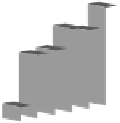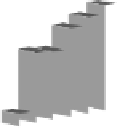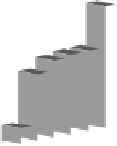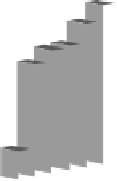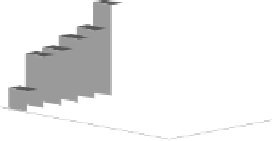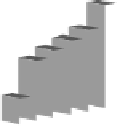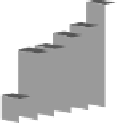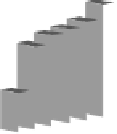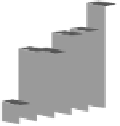Information Technology Reference
In-Depth Information
1
2
750
750
500
500
250
250
0
0
1
1
2
2
3
3
1
1
2
2
4
4
3
3
5
5
4
4
5
5
0
0
0
0
3
4
750
750
500
500
250
250
0
0
1
1
2
2
3
1
3
1
2
2
4
4
3
3
5
5
4
4
5
5
0
0
0
0
Nlf
l
t
Nlf
l
t
Fig. 5.
Mean number of detectors created in final generation (y-axis) as a function of non-self
clusters (x-axis) and self-clusters (z-axis). Again, 1 cluster is the most tightly clustered; 0 the
least. Note reversed direction of scales. Graphs are average of 25 runs and show (clockwise
from top left) 1,2,4,3 libraries.
Figure 5 shows the mean number of antibodies surviving negative selection. In
every case this number is highest for 1 self cluster, and decreases through to 5 self-
clusters, being lowest for uniformly distributed self; also the point of lowest
coverage.
For 1 library, the number of detectors is not strongly affected by the number of
non-self clusters, which is what might be expected as the latter has no effect on
negative selection. However, as the number of libraries increases the number of
detectors created seems to be linked to the number of antigen clusters, rising from 1 to
5 clusters and highest for uniform distribution. This may reflect an increase in the
number of duplicate detectors, although a detailed analysis of several sample datasets
(section 6) found no duplicates. Alternatively, it may reflect an increasing probability
that any randomly placed antibody which does not match self will match an antigen,
and so contribute to the fitness of that individual. In other words, as the antigens
spread out, so the utility of simply avoiding self increases on average, although the
possibility of obtaining complete antigen coverage from the set of detectors also
decreases. This would explain the apparent paradox of decreasing coverage (fig 4) for
an increasing number of detectors as the antigen becomes less clustered. Put another
way, for more clustered antigens the AIS can get higher coverage from a smaller
number of tightly focused detectors, a hypothesis which is explored in the next
section.





